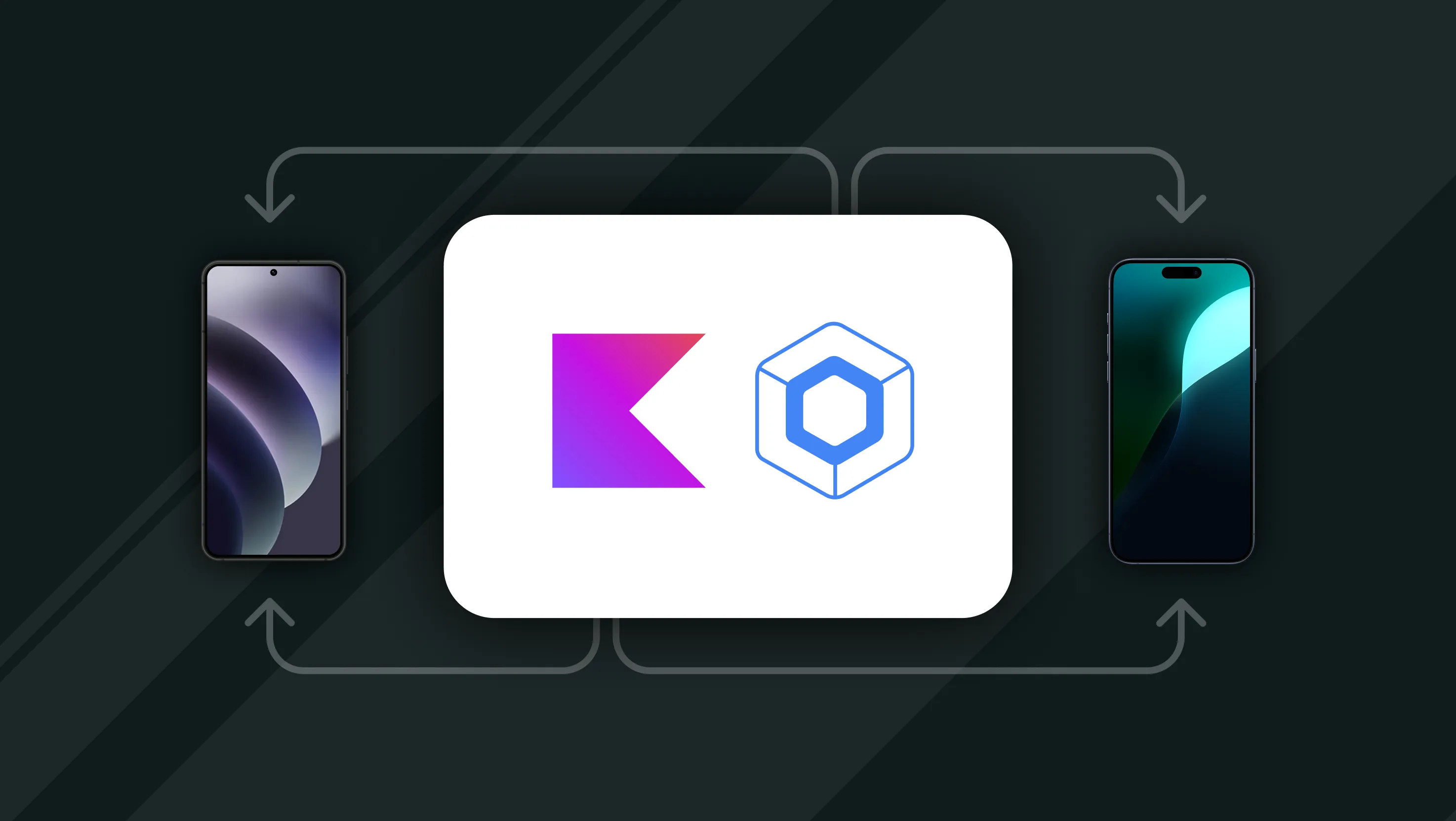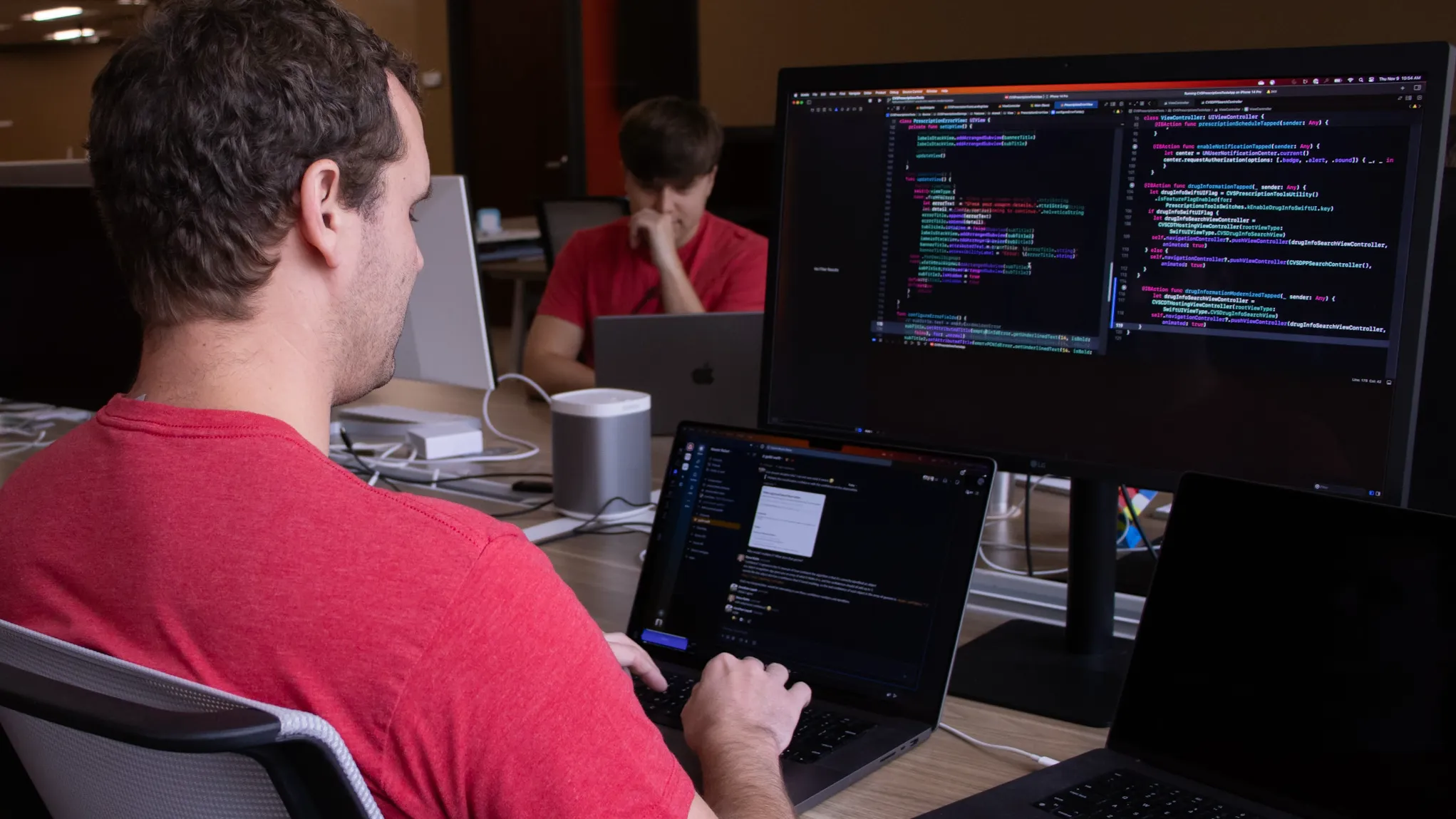Kotlin Multiplatform and Compose Multiplatform: A Powerful Duo for Cross-Platform Mobile Development


Developing mobile apps for both Android and iOS can be a daunting task, often requiring separate codebases and specialized knowledge for each platform. This is where cross-platform development comes in, offering the ability to share code between platforms to reduce duplication of effort and inconsistency of separate implementation. Among the various solutions, Kotlin Multiplatform (KMP) and Compose Multiplatform have emerged as strong contenders, offering a unique approach to sharing code and UI. Let’s dive into what makes this combination compelling, its advantages and disadvantages, and how it stacks up against other popular frameworks.
What is Kotlin Multiplatform?
Kotlin Multiplatform allows you to write shared code in Kotlin that can be compiled to different targets, including Android, iOS, web, desktop, and server-side. This means you can share business logic, networking, data serialization, and other non-UI code between platforms, significantly reducing development time and effort.
What is Compose Multiplatform?
Compose Multiplatform takes the power of declarative UI development, popularized by Jetpack Compose for Android, and extends it to other platforms. It lets you build user interfaces using a single codebase that can then be rendered natively on Android, iOS, and other targets. This means you can share not only your logic but also a significant portion of your UI code.
How Does it Work?
Kotlin Multiplatform works by compiling Kotlin code to different formats. For native targets like iOS, Kotlin code is compiled to native code using an LLVM-based backend for the Kotlin compiler and a native implementation of the Kotlin standard library known as Kotlin/Native. This allows for bidirectional interoperability with Swift/Objective-C with platform-specific APIs and excellent performance. For Android, Kotlin code is compiled to JVM bytecode, just like regular Android development. Compose Multiplatform leverages this by providing a common API for UI components that are then translated into native UI elements on each platform.
Pros of Kotlin Multiplatform and Compose Multiplatform
- Code Sharing: Share a significant portion of your codebase (business logic, networking, data models, UI) between platforms, leading to faster development and reduced maintenance.
- Native Performance: Kotlin Multiplatform compiles to native code for iOS, ensuring excellent performance and access to platform-specific features. Compose Multiplatform renders native UI elements, providing a smooth and responsive user experience.
- Strong Language and Tooling: Kotlin is a modern, expressive, and safe language with excellent tooling support.
- Gradual Adoption: You can integrate Kotlin Multiplatform and Compose Multiplatform incrementally into existing projects, starting with specific modules or features.
- Growing Ecosystem: The Kotlin Multiplatform and Compose Multiplatform ecosystem is rapidly growing, with increasing community support and libraries.
Cons of Kotlin Multiplatform and Compose Multiplatform
- Learning Curve: While Kotlin is relatively easy to learn, understanding the nuances of multiplatform development and platform-specific integrations can take time. Compose Multiplatform, while similar to Jetpack Compose, also has its specific learning curve. It should be noted that both Flutter and React Native have similar multiplatform development learning curves.
- UI Limitations: While Compose Multiplatform is rapidly improving, it might not offer the same level of customization and platform-specific UI control as building completely native UIs. Complex UI designs might require more platform-specific tweaks.
- Debugging Challenges: Debugging issues that arise in the shared code or during the interaction with native APIs can be more complex than debugging platform-specific code.
- Community Maturity: While growing quickly, the Kotlin Multiplatform and Compose Multiplatform community is still smaller compared to more established frameworks like React Native or Flutter, both of which have a three year head start.
Examples and Known Apps
While many companies are using Kotlin Multiplatform internally, public examples are still emerging. Some notable examples include:
- JetBrains: JetBrains, the creator of Kotlin, uses Kotlin Multiplatform in their mobile apps.
- Cash App: Uses Kotlin Multiplatform for some parts of their application.
- Philips: Uses Kotlin Multiplatform for shared logic for device communication and data handling.
- Netflix: Uses Kotlin Multiplatform for sharing business logic across platforms.
- Wrike: Uses Kotlin Multiplatform and Compose Multiplatform to write a shared component for their app.
- Instabee: Uses Kotlin Multiplatform and were early adopters of Compose Multiplatform. They had an existing Android app for internal users and wanted to quickly spin up an iOS version.
It’s important to note that many companies use Kotlin Multiplatform for specific modules or features, even if they don’t use it for the entire application. This allows them to benefit from code sharing without a complete rewrite.
Comparison with Other Frameworks
- Flutter: Flutter uses Dart and its own rendering engine to create UI. It offers fast development and hot reload, but it doesn’t render native UI elements. This can sometimes lead to a slightly different look and feel compared to native apps.
- React Native: React Native offers a large community with a range of libraries and does compile to native. However, it often requires writing native code for each platform, especially if you need to access the device hardware like the camera or GPS. Additionally, it uses JavaScript, a language more popular with full stack developers. Kotlin, on the other hand, is used by native Android developers and is syntactically similar to Swift which is used by native iOS developers.
Kotlin Multiplatform and Compose Multiplatform offer a compelling alternative to these frameworks by providing a balance between code sharing, native performance, and a modern development experience.
Conclusion
Kotlin Multiplatform and Compose Multiplatform are powerful tools for building cross-platform mobile applications. They offer significant advantages in terms of code sharing, performance, and developer experience. While there are some challenges, the benefits often outweigh the drawbacks, especially for projects where sharing business logic and UI code is crucial. As the ecosystem continues to mature, we can expect to see even wider adoption of this promising technology. If you’re looking for a modern, efficient, and performant way to build cross-platform mobile apps, Kotlin Multiplatform and Compose Multiplatform are definitely worth considering.
If you think Kotlin Multiplatform and Compose Multiplatform could help your team but want a second opinion, reach out to us at Atomic Robot – we’d be happy to help.
Copyright © 2025 JetBrains s.r.o. Kotlin Multiplatform and Compose Multiplatform and the Kotlin Multiplatform and Compose Multiplatform logos are trademarks of JetBrains s.r.o. www.jetbrains.com











